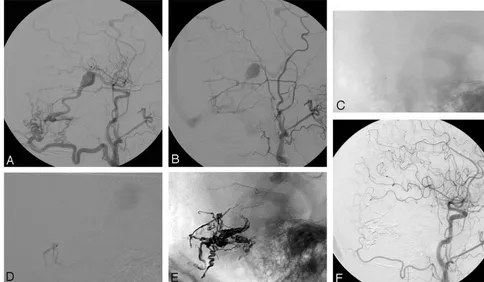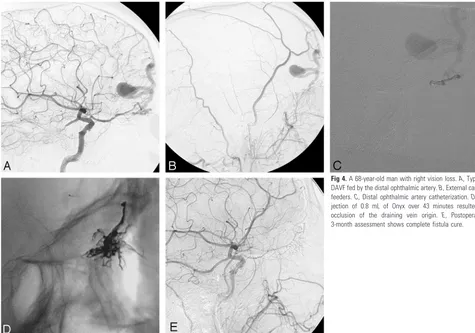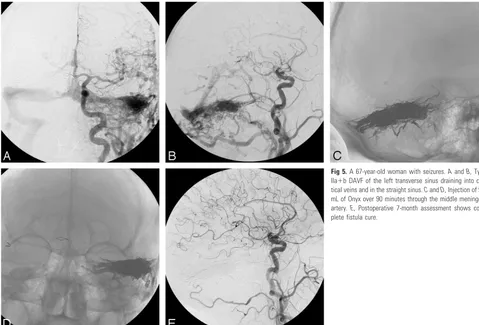Endovascular Treatment of Intracranial Dural Arteriovenous Fistulas with Cortical Venous Drainage: New Management Using Onyx
Full text
Figure




Related documents
A , Arterial phase of a right external carotid angiogram shows a DAVF at the right TSS ( large arrow ) with retrograde venous drainage into the superior sagittal sinus and
Venous drainage was analyzed with regard to the type of arteriovenous shunt (see above), and signs of venous hypertension (reflux into a dural sinus, or into a cortical vein,
TABLE 1: Summary of the six cases with arteriovenous fistulas at the cervicomedullary junction Patient No./ Age (y)/Sex Symptom Feeder SDAVF/SPAVF Fistula Point Drainer Related
The dural arterio- venous fistula drained into the superior ophthalmic vein via the inferior petrosal and cavernous sinuses in a retrograde fashion.. There was no antegrade
Type I dural AVFs were revealed by isolated pulsatile tinnitus and bruit as in our two patients and in four literature cases (1, 2, 7, 8).. All type III dural AVFs (fistulas
There was an exact relation between the clinical presentation and the venous drainage of DAVFs: the patients who had myelopathy had extensive spinal venous drainage descending
PURPOSE: To present th e MR findings of intr acran ial dural arteriovenous malformations with cortical venous drainage, e mphasi z in g the par enc h yma l
Transarterial liquid embolization in combination with trans- venous balloon-assisted protection of the venous sinus is feasible and safe for the treatment of dAVFs and offers high
